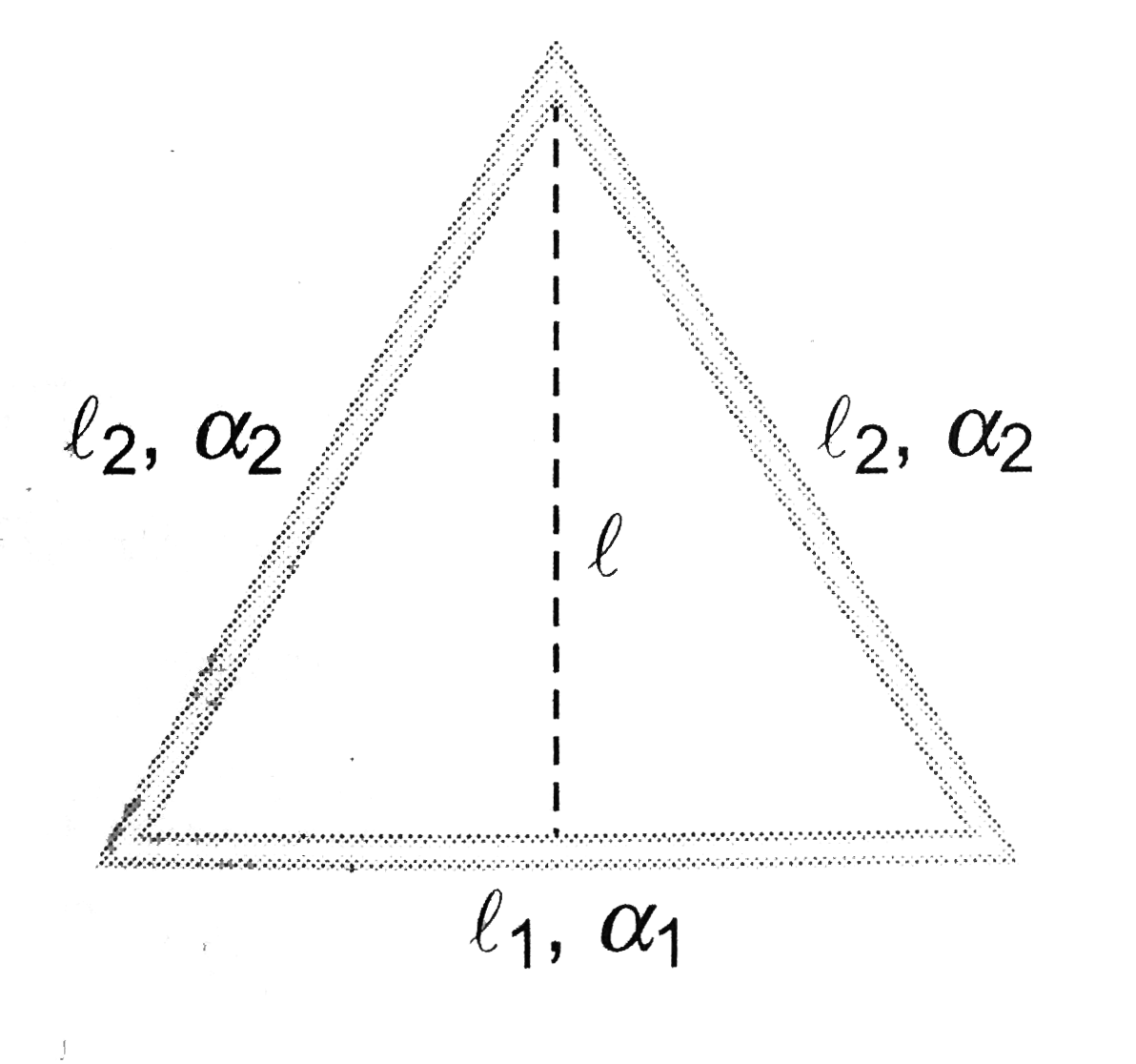The coefficient of linear expansion ' of the material of a rod of length varies with absolute temperature as where a & b are constant. The linear expansion of the rod when heated from to is :-
None of these
The correct Answer is:A
To solve the problem of finding the linear expansion of a rod when heated from temperature T1 to T2=2T1, given that the coefficient of linear expansion α varies with temperature as α=aT−bT2, we can follow these steps:
1. Understand the Coefficient of Linear Expansion:
The coefficient of linear expansion is given by:
α(T)=aT−bT2
This means that α depends on the temperature T.
2. Set Up the Formula for Linear Expansion:
The change in length ΔL of the rod when heated can be expressed as:
ΔL=L0∫T2T1α(T)dT
where L0 is the original length of the rod.
3. Substitute T2:
Since T2=2T1, we can rewrite the integral:
ΔL=L0∫2T1T1(aT−bT2)dT
4. Evaluate the Integral:
We can break the integral into two parts:
ΔL=L0(∫2T1T1aTdT−∫2T1T1bT2dT)
- For the first integral:
∫aTdT=aT22
Evaluating from T1 to 2T1:
(a(2T1)22−aT212)=a(4T21)2−aT212=3aT212
- For the second integral:
∫bT2dT=bT33
Evaluating from T1 to 2T1:
(b(2T1)33−bT313)=b(8T31)3−bT313=7bT313
5. Combine the Results:
Now substituting back into the expression for ΔL:
ΔL=L0(3aT212−7bT313)
6. Final Expression:
Thus, the linear expansion of the rod when heated from T1 to 2T1 is:
ΔL=L0(3a2T21−7b3T31)
The coefficient of linear expansion is given by:
α(T)=aT−bT2
This means that α depends on the temperature T.
The change in length ΔL of the rod when heated can be expressed as:
ΔL=L0∫T2T1α(T)dT
where L0 is the original length of the rod.
Since T2=2T1, we can rewrite the integral:
ΔL=L0∫2T1T1(aT−bT2)dT
We can break the integral into two parts:
ΔL=L0(∫2T1T1aTdT−∫2T1T1bT2dT)
∫aTdT=aT22
Evaluating from T1 to 2T1:
(a(2T1)22−aT212)=a(4T21)2−aT212=3aT212
∫bT2dT=bT33
Evaluating from T1 to 2T1:
(b(2T1)33−bT313)=b(8T31)3−bT313=7bT313
Now substituting back into the expression for ΔL:
ΔL=L0(3aT212−7bT313)
Thus, the linear expansion of the rod when heated from T1 to 2T1 is:
ΔL=L0(3a2T21−7b3T31)
Topper's Solved these Questions
- BOOK - ALLENCHAPTER - GEOMETRICAL OPTICSEXERCISE - EXERCISE -0282videos
GEOMETRICAL OPTICS
- BOOK - ALLENCHAPTER - GEOMETRICAL OPTICSEXERCISE - EXERCISE -0310videos
GEOMETRICAL OPTICS
- BOOK - ALLENCHAPTER - GEOMETRICAL OPTICSEXERCISE - SOME WORKED OUT EXAMPLES83videos
GEOMETRICAL OPTICS
- BOOK - ALLENCHAPTER - CURRENT ELECTRICITYEXERCISE - EX.II66videos
CURRENT ELECTRICITY
- BOOK - ALLENCHAPTER - GRAVITATIONEXERCISE - EXERCISE 49videos
GRAVITATION
Similar Questions
The coefficient of linear expansion of a rod of length 1 m, at 27∘C, is varying with temperature as α = 2/T unit (300K≤T≤600K), where T is the temperature of rod in Kelvin. The increment in the length of rod if its temperature increases from 27∘C to 327∘C is
View SolutionThe corfficient of linear expansion for a certain metal varies with temperature as α(T). If L0 is the initial elgnth of the metal and the temperature of metal is changed from T0 to T(T0>T), then
View SolutionThe coefficient of linear expansion of an in homogeneous rod change linearly from α1 to α2 from one end to the other end of the rod. The effective coefficient of linear expansion of rod is
View SolutionThe coefficient of linear expansion of an in homogeneous rod change linearly from α1 to α2 from one end to the other end of the rod. The effective coefficient of linear expansion of rod is
View SolutionA rod of length l with thermally insulated lateral surface consists of material whose heat conductivity coefficient varies with temperature as k=a/T, where a is a constant. The ends of the rod are kept at temperatures T1andT2. Find the function T(x), where x is the distance from the end whose temperature is T1.
View SolutionAn isosceles triangles is formed with a thin rod of length l1 and coefficient of linear expansion α1, as the base and two thin rods each of length l2 and coefficient of linear expansion α2 as the two sides. The distance between the apex and the midpoint of the base remain unchanged as the temperature is varied. the ratio of lengths l1l2 is
 View Solution
View SolutionAn isosceles triangles is formed with a thin rod of length l1 and coefficient of linear expansion α1, as the base and two thin rods each of length l2 and coefficient of linear expansion α2 as the two sides. The distance between the apex and the midpoint of the base remain unchanged as the temperature is varied. the ratio of lengths l1l2 is
 View Solution
View SolutionAn isosceles triangles is formed with a thin rod of length l1 and coefficient of linear expansion α1, as the base and two thin rods each of length l2 and coefficient of linear expansion α2 as the two sides. The distance between the apex and the midpoint of the base remain unchanged as the temperature is varied. the ratio of lengths l1l2 is
 View Solution
View SolutionIf two rods of length L and 2L having coefficients of linear expansion α and 2α respectively are connected so that total length becomes 3L, the average coefficient of linear expansion of the composite rod equals
View SolutionIf two rods of length L and 2L having coefficients of linear expansion α and 2α respectively are connected so that total length becomes 3L, the average coefficient of linear expansion of the composite rod equals
View Solution

